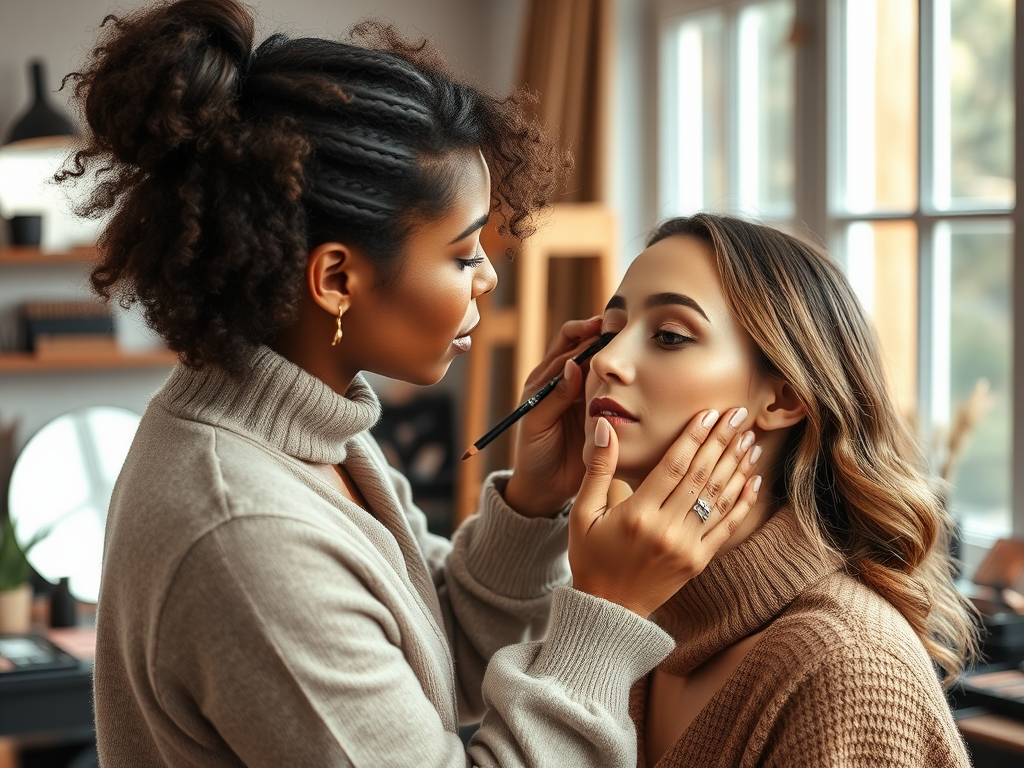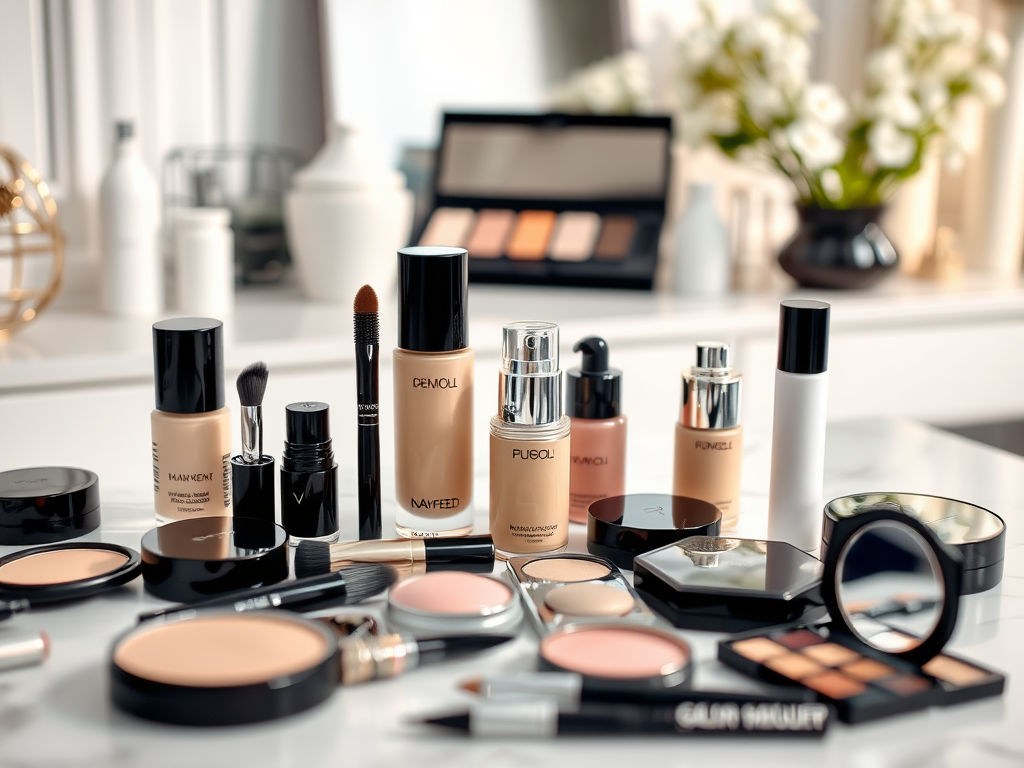Have you ever looked in the mirror only to be greeted by a face that resembles a cake rather than the smooth canvas you envisioned? Cakey makeup can be frustrating, leading to feelings of insecurity and the urge to wipe it all off. But what truly causes this unsightly look? Many factors are at play, ranging from your choice of products to your application techniques. Understanding what leads to cakey makeup is the first step toward avoiding it. Fear not, as we will explore common pitfalls and provide solutions to achieve a seamless and radiant finish.
The world of makeup is vast, and so are the structural techniques behind creating a flawless look. Often, the issue lies not just in a single misstep but a combination of mistakes made during preparation and application. Whether it’s a mismatched foundation, neglecting vital skincare steps, or over-applying products, a few changes in your routine can make a world of difference. This guide aims to delve deep into these common mistakes and equip you with the knowledge to ensure a smooth, radiant makeup finish.
Understanding Cakey Makeup

Cakey makeup refers to a heavy or uneven appearance that detracts from your natural beauty, creating an artificial look. While it can feel like a makeup nightmare, the causes are often identifiable and preventable. Key factors contributing to this phenomenon can include insufficient skin prep, an overload of products, and improper tools. Recognizing the right path to a flawless face is essential for any makeup lover. When makeup sits heavily on the skin, it often accentuates flaws rather than concealing them, making one appear older than they are. Learning how to avoid a cakey finish is thus an invaluable skill.
Common Mistakes That Cause Cakey Makeup

Makeup can become cakey for several reasons, often linked to specific mistakes made during application or product choices. By pinpointing these missteps, you can take corrective measures that lead to a gorgeous application. Below is a list of the most common culprits of cakey makeup:
- Choosing the Wrong Foundation
- Skipping Skincare
- Overusing Products
- Incorrect Tools and Techniques
- Ignoring Skin Prep
Choosing the Wrong Foundation
The foundation serves as the canvas for any makeup look. Thus, selecting a foundation that doesn’t align with your skin type or tone can lead to a heavy, unflattering finish. If your foundation is too thick or doesn’t blend well, it can sit on top of your skin, resulting in a cakey look. Knowing your skin type—oily, dry, or combination—will guide you in picking the best foundation for your complexion. Always consider testing out samples to determine the best match before committing to a full bottle. Investing time in foundation selection can pay off by creating a natural base that enhances rather than detracts from your appearance.
Skipping Skincare
Many people underestimate the importance of a solid skincare regimen as the foundation of any successful makeup routine. Neglecting skincare can lead to a lack of hydration and texture issues, causing your makeup to cling to dry patches and appear uneven. A well-moisturized face creates a smooth canvas for application and helps to prolong your look. Ultimately, it’s crucial to invest in a good skincare routine that includes cleansing, exfoliating, and moisturizing before makeup application. Failing to prioritize skincare will often leave you battling with cakiness throughout the day. Thus, creating a harmonious balance between skincare and makeup is vital for an impeccable finish.
Overusing Products
Another frequent error that leads to a cakey look is applying too much product. Many believe that layering products will enhance coverage, but this often backfires, creating a heavy finish that highlights imperfections rather than concealing them. Moderation is key; applying a thin layer of foundation followed by targeted concealing can yield a more natural appearance. Consider the texture and weight of the products you are using to achieve the right balance while reducing the risk of cakiness. Less can indeed be more when it comes to makeup application.
| Makeup Product | Common Issue | Recommended Action |
|---|---|---|
| Foundation | Too thick or mismatched | Choose a lightweight, buildable formula |
| Concealer | Heavy layering | Apply sparingly on problem areas only |
| Setting Powder | Excess product | Use a light hand and focus on specific areas |
Incorrect Tools and Techniques
The tools you choose for makeup application can greatly affect the final result. Using inappropriate brushes or sponges can cause streaks and uneven application, ultimately leading to a cakey effect. Learn the difference between brushes designed for liquids, powders, or creams to enhance your makeup game. Always blend makeup products using gentle motions to ensure they sink into the skin rather than sit on top of it. Finding the right application technique can dramatically improve the overall appearance of your makeup.
How to Achieve a Flawless Finish
Avoiding cakey makeup incorporates a few simple strategies that can transform your look drastically. Aiming for a flawless finish is not only about products but also about how you approach your entire makeup routine.
- Selecting the Right Products
- Prioritizing Skincare
- Mastering Application Techniques
- Setting Without Caking
Selecting the Right Products
Choosing lightweight, buildable foundations is pivotal; they allow you to control coverage without overwhelming your skin. Always opt for products that suit your specific skin type, ensuring they work in harmony with your complexion. Examine labels for hydrating ingredients or oil-free options, depending on your needs. When trying out a new product, take advantage of sample sizes to verify how it reacts with your skin before investing in full-sized versions. Finding the best products requires patience and experimentation, but it’s worth it for the luscious, flawless finish.
Prioritizing Skincare
A compelling skincare routine can be your best friend in achieving a smooth makeup look. Make sure to include cleansing, exfoliating, and hydrating steps in your regimen; this will prepare your skin and give it the moisture it craves. Employ a gentle exfoliant that can help eliminate dead skin cells and promote cell renewal, ensuring a fresh base. After cleansing, don’t skip moisturizer; consider one with added benefits like mattifying or illuminating properties depending on your needs. In short, nourishing your skin contributes significantly to its overall appearance, drastically reducing cakiness.
Mastering Application Techniques
Learning proper application techniques can significantly reduce your chances of a cakey finish. Utilize techniques such as tapping and blending rather than swiping, as this allows products to meld into your skin seamlessly. Each tool serves a unique purpose; for instance, beauty sponges work wonders for blending liquid products, while brushes can provide precision and coverage. Practice will make perfect, so don’t be discouraged if your application doesn’t become flawless overnight. As your skills develop, so will your confidence in achieving a beautiful makeup look.
Conclusion
Cakey makeup is often a result of common mistakes that can be easily avoided. By understanding your skin, selecting the right products, and applying them with care, you can achieve a flawless finish that enhances your natural beauty instead of masking it. Your makeup should be a reflection of your style, not an added burden. Embrace the process, be mindful of your methods, and delight in the results that waiting for a flawless application can bring. Remember, the best makeup enhances who you are while allowing your beauty to shine through.
Frequently Asked Questions
- What causes makeup to look cakey? Makeup can appear cakey due to wrong product choices, improper application techniques, and neglecting skincare.
- How can I prevent my makeup from looking heavy? To prevent heavy makeup, focus on using lightweight products, moisturizing your skin, and using appropriate application tools.
- Is it always about the foundation? While the foundation is crucial, other factors like skincare, product layering, and application techniques also play significant roles.
- How do I know my skin type? Common skin types include oily, dry, combination, and normal. Consider your skin’s characteristics, like oiliness and dryness, to determine your type.
- Should I always use a primer? Using a primer is beneficial for most skin types, as it helps create a smooth base and prolongs makeup wear. However, it can be skipped for light or no-makeup looks.